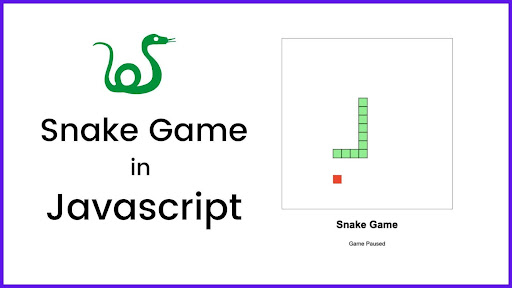From Code to Classic Gameplay

The world of classic games has always had a special charm, and among the most enduring is the timeless Snake game. With the rise of modern web technologies, recreating this classic in JavaScript has become an exciting endeavor for developers and gamers alike. Snake JS offers a way to combine nostalgic gameplay with modern coding techniques, allowing enthusiasts to explore programming while enjoying a familiar game.
The Origins of the Snake Phenomenon
Snake has its roots in the late 1970s, appearing on arcade machines and eventually becoming a staple on early mobile phones. Its simple yet addictive gameplay – controlling a line that grows longer with each item consumed – captivated players worldwide. Today, recreating this experience digitally requires understanding both the game mechanics and the programming language behind it. Snake JS brings these elements together, merging classic gameplay with contemporary development tools.
Why JavaScript is Perfect for Snake
JavaScript is a versatile language that powers much of the web, from dynamic websites to interactive games. Its ability to handle real-time interactions and animations makes it ideal for building a Snake game. Using Snake JS, developers can manipulate the game board, control the snake’s movement, and respond to player inputs seamlessly. This combination of coding and gameplay not only teaches programming fundamentals but also delivers a fun and engaging user experience.
Setting Up the Game Environment
Before coding the game, it’s crucial to establish the development environment. A simple text editor like Visual Studio Code, paired with a modern browser, is enough to get started. For Snake JS, you’ll need to create an HTML structure to display the game, use CSS for styling, and JavaScript to handle the logic. Structuring your project correctly ensures smoother gameplay and makes debugging easier as your snake slithers across the board.
Designing the Game Grid
The snake moves within a defined grid, and designing this grid is one of the first tasks when building a game using Snake JS. Each cell in the grid represents a potential position for the snake or a piece of food. By defining the grid dimensions and cell size in JavaScript, developers can easily track the snake’s location and detect collisions, which are essential for maintaining game logic and scoring.
Coding Snake Movement
The heart of any Snake game lies in smooth movement mechanics. In Snake JS, movement is typically handled by listening for keyboard inputs and updating the snake’s position on the grid. Developers use arrays to represent the snake’s body and loop functions to continuously update the game state. By controlling speed and direction, the snake glides fluidly across the screen, providing players with the responsive experience they expect.
Adding Food and Scoring
To keep players engaged, food items are randomly generated on the grid. When the snake consumes food, it grows longer, and the player’s score increases. Implementing this in Snake JS requires checking the snake’s head position against the food’s coordinates and updating both the snake’s array and the score display. This mechanism creates a satisfying loop that challenges players to survive longer while growing their snake.
Collision Detection and Game Over
A critical aspect of gameplay is collision detection. The snake should stop the game if it hits the wall or collides with itself. In Snake JS, this is achieved by comparing the snake’s head coordinates to the grid boundaries and its own body segments. Implementing accurate collision detection ensures fairness and maintains the classic challenge, keeping players on their toes as they navigate increasingly complex paths.
Enhancing Gameplay with Levels
Basic Snake games are fun, but adding levels or increasing difficulty enhances replay value. In Snake JS, developers can increase the snake’s speed or introduce obstacles as the player progresses. This dynamic adjustment creates a more engaging experience, encouraging players to master both the game mechanics and their reaction times, all while enjoying the simplicity of a classic game updated for modern audiences.
Styling and Visual Appeal
While gameplay is key, visuals play a significant role in user engagement. With CSS and HTML5 canvas, Snake JS allows developers to style the snake, food, and background. Adding animations, color changes, or even dynamic effects when the snake grows can elevate the game experience. This visual enhancement ensures that players are not only challenged but also entertained, making the classic snake game feel fresh and modern.
Sound Effects and Feedback
Sound effects provide immediate feedback for player actions, making the game more immersive. In Snake JS, developers can integrate simple audio cues for eating food, collisions, or achieving high scores. These auditory signals enhance the gaming experience, creating a connection between player actions and in-game results, reinforcing the addictive nature of the game while maintaining its nostalgic roots.
Optimizing Performance
A smooth experience is crucial, especially as the snake grows longer. Optimizing Snake JS involves managing array operations efficiently, limiting unnecessary redraws on the canvas, and using requestAnimationFrame for animations. By focusing on performance, developers ensure that the game runs consistently across different devices and browsers, preserving the responsive gameplay that makes Snake so enjoyable.
Mobile Compatibility
In today’s world, mobile gaming is essential. Snake JS can be adapted for touchscreens by adding swipe controls or on-screen buttons. This adaptation ensures that players can enjoy the game anywhere, from desktop to mobile, maintaining the core mechanics while broadening the audience. A mobile-friendly Snake game opens opportunities for more players to experience the addictive joy of the classic game.
Adding Custom Features
One of the joys of working with Snake JS is the flexibility to add custom features. Developers can introduce power-ups, multiple snakes, or unique game modes. These creative additions make the game stand out while retaining the core mechanics. By experimenting with features, developers not only enhance player engagement but also explore new coding challenges, learning more about JavaScript’s capabilities in the process.
Teaching Programming Concepts
Beyond entertainment, Snake JS is an excellent educational tool. It introduces arrays, loops, conditional statements, and event handling in a hands-on way. Beginners can learn programming logic while immediately seeing the results of their code, which reinforces concepts in an engaging and interactive manner. The combination of fun and learning makes this project appealing to both hobbyists and educators.
Community and Open Source Opportunities
Many developers share their Snake JS projects online, allowing others to learn and improve upon existing code. Open-source contributions can lead to collaborative enhancements, such as improved AI snakes, multiplayer modes, or advanced scoring systems. Engaging with the community fosters creativity and helps developers refine their skills while contributing to a broader ecosystem of interactive web games.
Challenges and Debugging
Building a Snake game may seem straightforward, but challenges often arise, especially with collision detection, timing, and responsive controls. Debugging in Snake JS requires patience and methodical testing, ensuring that all possible game scenarios are handled. Overcoming these challenges not only results in a polished game but also strengthens problem-solving and coding skills, which are invaluable for any developer.
Launching Your Game
Once complete, a Snake JS game can be shared online or embedded in personal portfolios. Hosting the game on platforms like GitHub Pages allows others to play it directly in their browsers. This accessibility ensures that the effort put into development reaches a wide audience, enabling feedback, improvement, and the satisfaction of seeing your code come to life in a playable, classic game.
The Enduring Appeal of Snake
The charm of Snake lies in its simplicity and replay value. Even decades after its initial release, the game continues to capture players’ attention. By combining classic gameplay with modern programming through Snake JS, developers and players can celebrate this timeless game in new and exciting ways. It’s a perfect example of how coding and creativity can breathe new life into a beloved classic.
Conclusion: Code Meets Nostalgia
Recreating the Snake game with Snake JS is more than a coding exercise; it’s an exploration of nostalgia, creativity, and technical skill. From designing the grid to handling collisions, every line of code contributes to the magic of gameplay. Whether you are a beginner learning JavaScript or an experienced developer seeking a fun project, building this game offers endless opportunities for learning, experimentation, and enjoyment. The blend of retro charm and modern coding possibilities ensures that Snake will remain a favorite pastime for generations to come.





